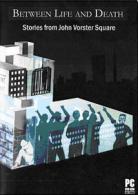SAHA invites history educators to a one-day workshop on using the stories of detention without trial at the notorious John Vorster Square, as depicted in the SAHA DVD and educators' guide 'Between life and death: stories from John Vorster Square' as a case study for teaching apartheid history.
Date: Saturday 14 September 2013
Venue: Constitution Hill
Time: 08h30 - 13h30
Please RSVP to confirm attendance by contacting SAHA by phone or email with your name, school, and district:
Email: info@saha.org.za
Phone: 011 718 2560
ABOUT JOHN VORSTER SQUARE
On a chilly highveld day 45 years ago today, Prime Minister Balthazar John Vorster opened John Vorster Square station. He heralded the squat 10-storey blue structuring that overlooked the motorway in downtown Johannesburg as a ‘state-of-the-art’ modern police station because it housed all major divisions of the apartheid police under one roof’, boasting that the shining new precinct was the largest police station in Africa.
It was perhaps fitting that the building was named after Vorster – as the former Minister of Justice, he had overseen the institution of harsh security laws designed to crush opposition to apartheid and ensured that the Security Branch of the South African Police acquired formidable powers. Between 1960 and 1990, over 80 000 South Africans were detained, including 10 000 women and 15 000 children and youth under the age of 18 years. The number of people in detention reached its peak after the government declared a total state of emergency in June 1986: 25 000 people were detained over a period of 12 months.
John Vorster Square acquired a reputation as a site for brutality and torture, becoming the primary location for detentions and interrogation on the Witwatersrand during the 1970s and 1980s. 75 deaths in detention were officially recorded in the Truth and Reconciliation Commission’s report. Between 1970 and 1990, eight people, all of whom were being held under
detention regulations, died in John Vorster Square.
Following the release of Nelson Mandela in 1990, widespread changes were made to the security laws in the country. Detention without trial was removed from the stature books and the Security Branch disbanded. In 1995, the South African Police Service was launched and in 1997, the bronze bust of BJ Vorster was removed from the foyer, John Vorster Square was renamed Johannesburg Central Police Station and now functions to fight crime in Johannesburg.
Despite these changes, the bleak interior and the dank smell remain the same. The ghosts of its former occupants are far from banished.
BETWEEN LIFE AND DEATH: STORIES FROM JOHN VORSTER SQUARE: An interactive DVD and educators' guide.
A virtual walk through the police cells on the 10th floor of South Africa's most notorious police station where the security forces reigned in apartheid South Africa, this interactive DVD features interviews with former detainees and security police, as well as photographs, press clippings, drawings and archival footage, revealing the horrors of detention without trial.
Commissioned by SAHA and produced by Doxa Productions as part of the SAHA / Sunday Times Heritage Project in 2007, the DVD has now being adapted to create an online exhibit on the Google Cultural Institute website, curated by SAHA, entitled 'Detention without trial: Stories from John Vorster Square'.
In 2012, SAHA, in conjunction with Shikaya, developed an educators' guide to accompany the DVD, linking interviews, documents and posters from the DVD to the curriculum, thus enabling educators to use the DVD and guide to teach key aspects of apartheid history.
The development of the DVD and the online exhibit was funded by the Atlantic Philanthropies.
'Between life and death' user guide and the hosting of this educators' workshop was made possible through the generous funding of the Rosa Luxemburg Foundation.







